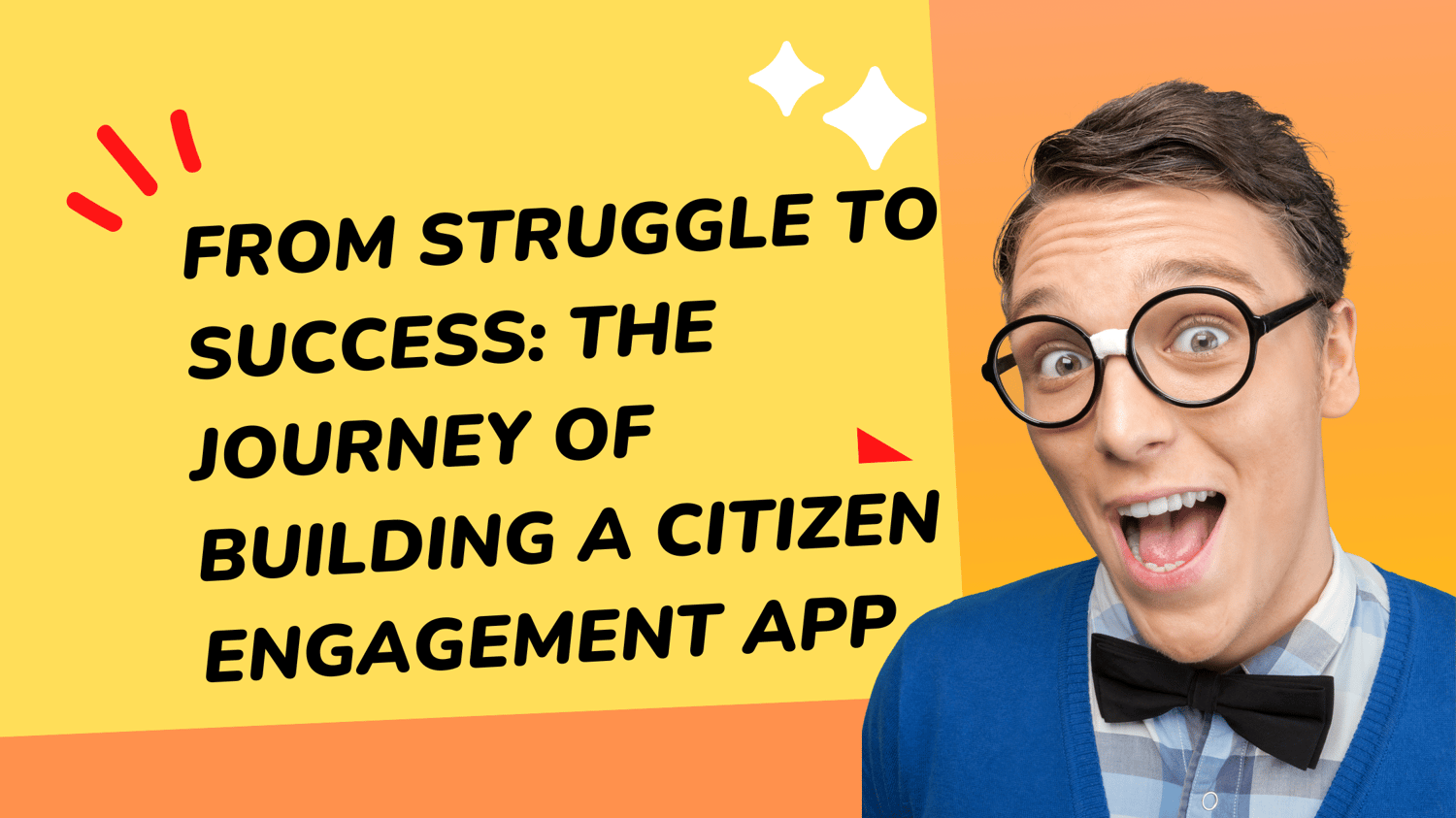
Let me tell you a story about a fictional city named Bloomville (but the story might resonate with many of us when living in this kind of city), where the local government struggled to engage its citizens. The officials realized that traditional citizen engagement methods were ineffective in reaching a wider audience. They developed a citizen engagement app allowing citizens to provide feedback, report issues, and participate in decision-making processes.
The idea was fantastic, but the officials soon realized that building a citizen engagement app was not as easy as they had thought. They faced several challenges that they had not anticipated. Let me tell you about some of these challenges.
One of the main challenges was understanding the needs of their citizens. The officials knew that the app's success depended on how well it met the needs of its users. To overcome this challenge, they conducted user research, focus groups, and surveys to understand what their citizens wanted.
Another challenge was security and privacy concerns. The app would collect personal data from users, and the officials knew that this sensitive data required robust security measures to protect it from unauthorized access. They implemented encryption, authentication, and access control to ensure safe user data.
Usability and user experience were also significant challenges. The officials knew the app had to be easy to use, navigate, and understand. They ensured the user interface was intuitive and accessible to people with disabilities. They also ensured the app provided a seamless user experience, with fast load times and minimal downtime.
Integrating with existing government systems was another challenge. The officials knew the app had to integrate with government databases, such as voter registration and census data, to enhance its effectiveness. However, they faced technical challenges due to data formats and systems differences. They worked closely with the relevant government agencies to ensure seamless integration.
Funding and sustainability were also significant challenges. The officials knew that building and maintaining the app could be expensive. They needed a sustainable funding model that ensured the app's longevity. They formed partnerships with government agencies, private organizations, and non-governmental organizations to achieve sustainability.
Building a critical mass of users was another significant challenge. The officials knew the app had to attract many users to ensure effective citizen engagement. They faced competition from alternative platforms, so they developed a marketing strategy that targeted potential users.
Technical challenges also presented themselves during development, testing, and deployment. The officials had to have a team with the required technical skills to overcome these challenges.
Finally, resistance to change was a common challenge in implementing new technology in government. The officials knew some citizens might resist using the app, preferring traditional engagement methods. They educated citizens about the app's benefits and addressed their concerns. They also led by example by using the app to engage citizens.
Building a citizen engagement app is not easy, and the Bloomville officials faced several challenges. However, they overcame these challenges and developed a citizen engagement app that transformed citizens' engagement with their government.
Based on the original article "Overcoming the Top Challenges in Building a Citizen Engagement App"
Related Articles
- Maximizing IoT Platform Capabilities for Faster Development
- Collaborating for Success: How Universities and IoT Companies are Driving Innovation
- Revolutionizing IoT Education: How IoT Platforms are Making Learning More Practical and Accessible
- From Data to Insights: How IoT Platforms are Helping Smart Cities Optimize Operations
- Simplifying IoT Development: Why You Need an IoT Platform
- Revolutionize Your IoT Skills: Register Now for FAVORIOT’s Discounted Training
- Unleashing the Potential of IoT: How to Kickstart Your Project


